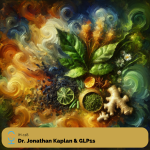
Exploring Anauralia and the Soundless Imagination Realm
Delving into the Realm of Silence: Understanding “Anauralia” and the Boundaries of the Soundless Imagination
A recent study has uncovered that a subset of the population is incapable of conjuring up sounds in their mind’s ear, a fascinating condition termed “anauralia“. This condition signifies the lack of an auditory inner world where a person cannot mentally simulate sounds such as a thunderclap, birdsong, or snippets of a beloved tune.
Researchers from the University of Auckland first pinpointed the existence of anauralia in 2021. Since then, rising curiosity and recognition of this phenomenon have emerged. As 2025 unfolds, a pivotal international symposium named “Mind’s Ear and Inner Voice,” hosted by Waipapa Taumata Rau, seeks to unravel the mysteries of the mind’s acoustic creations. The university’s dedicated team has been instrumental in illuminating this condition, delving into the neuroscience underpinning our ability to fabricate auditory imagery in the brain.
The Interplay between Imagination, Mind, and Creative Expression
The mind’s imaginative capacity often conjures a seamless fusion of memories, learned concepts, and sensory input, melding into fresh cognitive visions crafted by our neural pathways. Brain areas like the frontal cortex and hippocampus are central to the generation of imaginative and evocative inner constructs. These internal escapades play a crucial role for many, not only coloring personal reveries but also influencing artistic and literary expression.
April 2025’s symposium will investigate this intriguing subject matter, with a multidisciplinary panel – including scientists, philosophers, and creative minds – providing varied perspectives on how our brain constructs nonexistent sounds. Professor Tony Lambert from Auckland’s School of Psychology has highlighted the parallel curiosity between scientists and artists in understanding the cognitive underpinnings of such mental imagery, acknowledging its significance to creative and innovative endeavors.
Professor Lambert explains that the existence of anauralia can be viewed along a continuum. On one end are individuals capable of intricate auditory recreations, like entire orchestral pieces, while on the other end are those with a diminished or nonexistent capacity for such mental auditions. Anauralia’s impact can be felt in various life aspects, including concentration and mindfulness, with emerging evidence suggesting those with quieter minds may experience heightened focus due to fewer cognitive intrusions.
Key discussions lined up for the event will delve into phenomena like auditory verbal hallucinations and the role of cognitive processes within literary works. The University’s Anauralia Lab, supported by the Marsden Fund, continues its investigation using advanced methodologies such as high-density EEG, functional MRI, and electromyography to further decode this silent cognitive condition.
As ongoing curiosity surrounds anauralia, it poses thought-provoking questions about the essence of creativity and the imagination. Individuals with anauralia often develop novel cognitive strategies—like embracing logical patterns, visual stimuli, or physical sensations—to support their personal and professional endeavors. Though it presents certain barriers, anauralia also fosters innovative outlooks on human mental processes and the brain’s remarkable capacity for adaptation.








